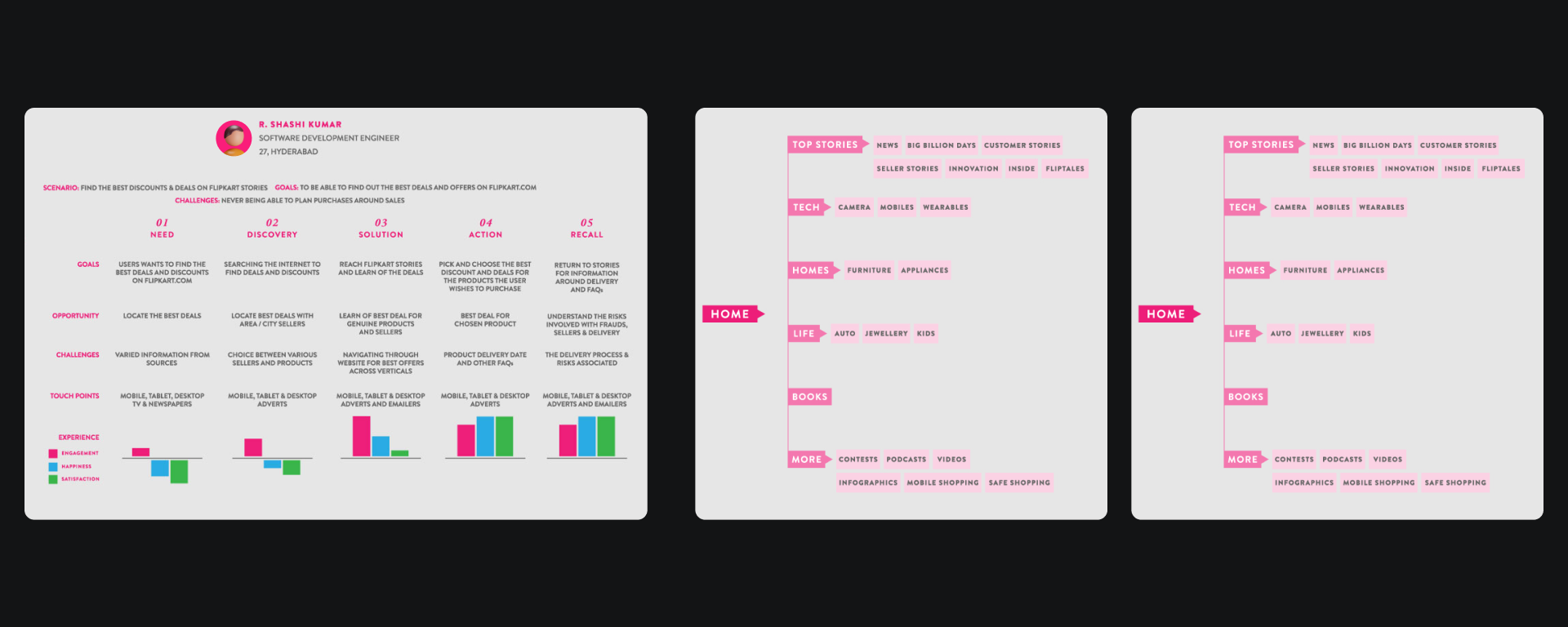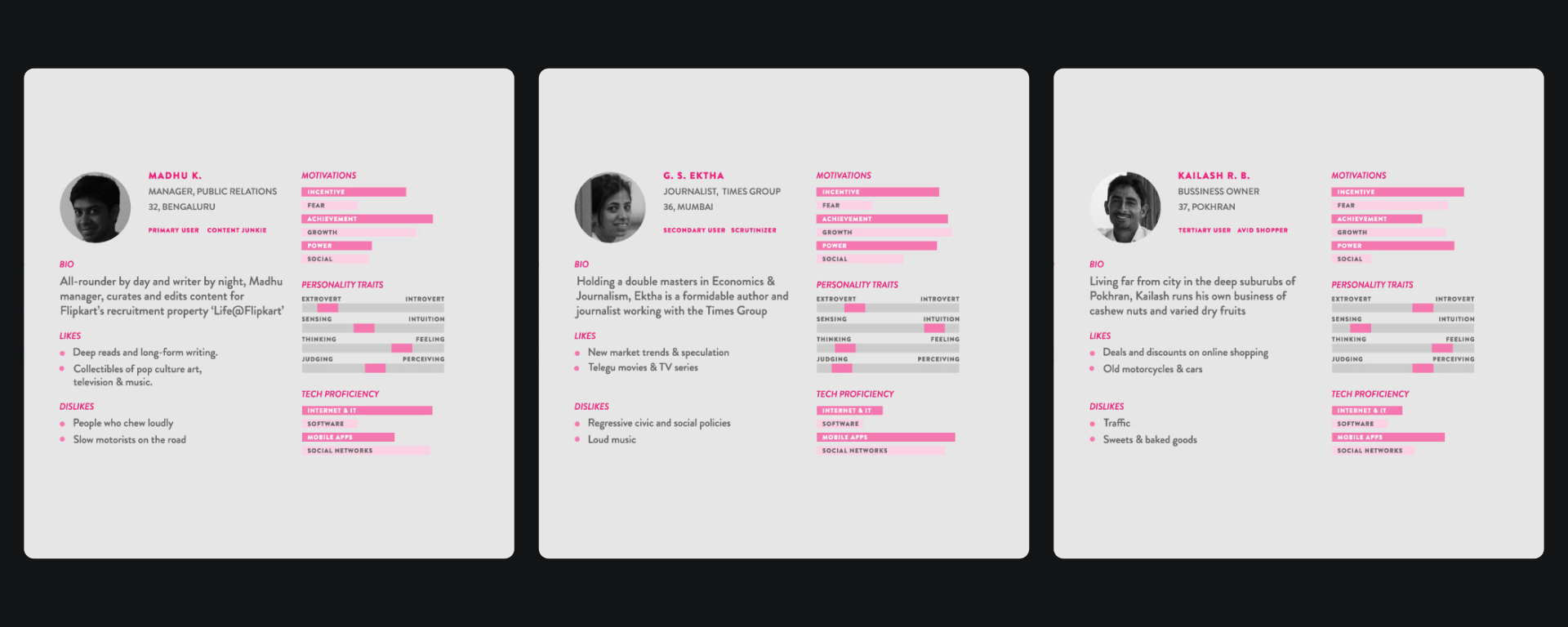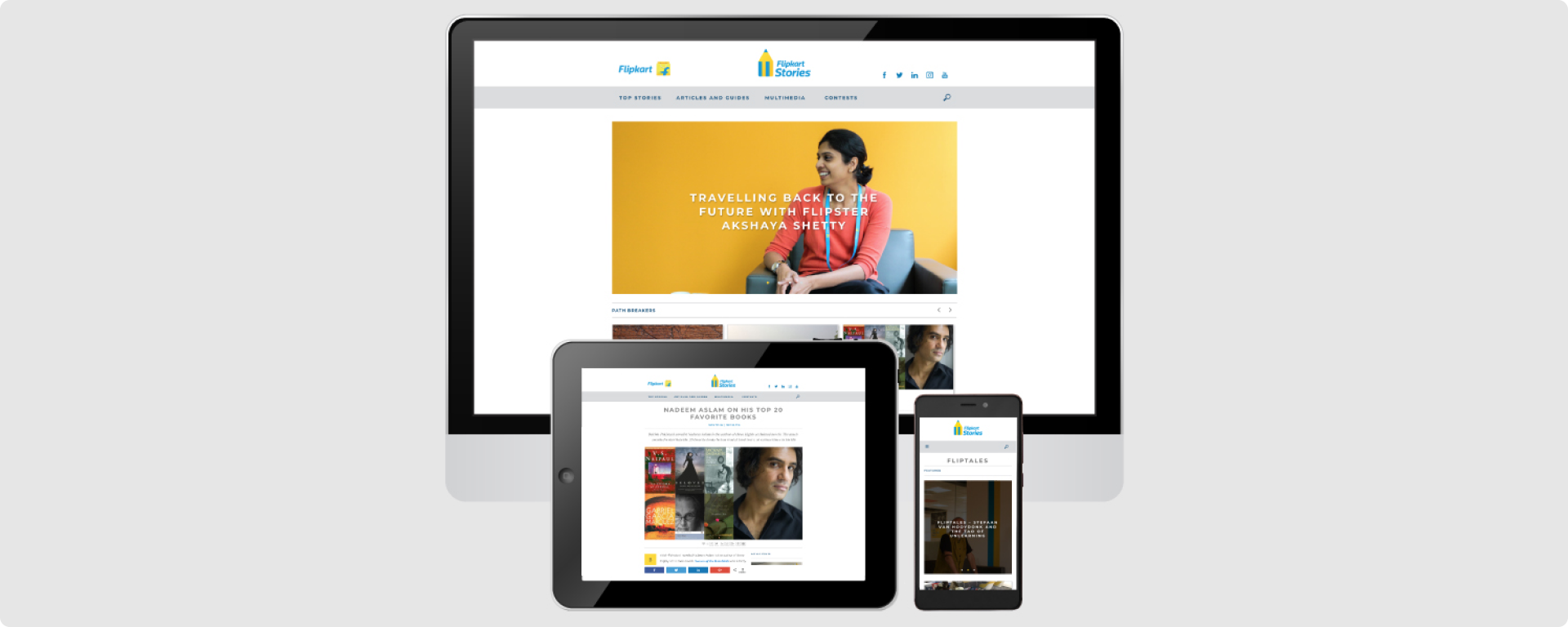Storytelling & Usability
The Flipkart Story: Digital Narratives & UX Innovation
ui/ux audit publishing
Objective and Insightful Beginnings
Flipkart Stories was created for a sole purpose—to set benchmarks in corporate storytelling for India. Unlike traditional practices where corporations relied on external press or paid features to disseminate news, Stories (as it was lovingly named) aimed to break all news about Flipkart internally, controlling the narrative directly.
The prototype of the website, built on a rudimentary WordPress template, lacked consideration for visual and UX design. It was imperative to evolve beyond outdated Web 2.0 aesthetics to catch up to current trends and improve key performance metrics.
Constructed similarly, the prototype failed to impact key performance metrics. © NewsTube by CactusThemes
Designing with Purpose
User research revealed that the site's architecture wasn’t conducive to long-form reading, especially on mobile devices. The template (intended primarily for press releases) while comprehensive with third-party integrations, couldn’t present long-form articles in an easy-to-consume manner. Forced to comply with editorial needs, the result was a glitchy website, with users complaining of poor readability and jumbled site architecture.
User journey maps helped unearth hidden usability issues. These maps eventually underscored the need to simplify the website's architecture.
Addressing this, the redesign prioritized content presentation and new features aligned with user needs. The focus was on de-cluttering the interface, optimizing the layout for storytelling, and remarkably improving navigation. Furthermore, the site was engineered to seamlessly integrate social media exhibits and interactive elements to enrich articles and elevate the user experience.
Usability surveys revealed deep user insights that were foundational to the redesign effort.
Content Discovery
One of Stories’ core objectives was spotlighting human stories; and aligning business vision with customer needs. This objective served as a tenet for the redesign. At first glance, the platform was inundated with listicles, contests, and press releases; overshadowing compelling human narratives that showcased Flipkart's humanity.
By reimagining the site, the redesign ensured that human stories were front and centre, supported by vibrant creatives instead of drawl stock imagery. The improvement of the website’s usability facilitated the discoverability of these narratives, making every visit informative, engaging, and memorable.
The new website design was responsive across devices and delivered on several fronts.
Measurable Impact
Stories’ revitalisation led to a significant improvement in traffic, engagement and other key performance indicators. This triumph underscored the impact of strategic UX design and content strategy, proving that focusing on user-centric innovation and powerful human stories could dramatically enhance digital engagement.
📐 ux whitepapers
© arjun paul, 2025. all rights reserved.





